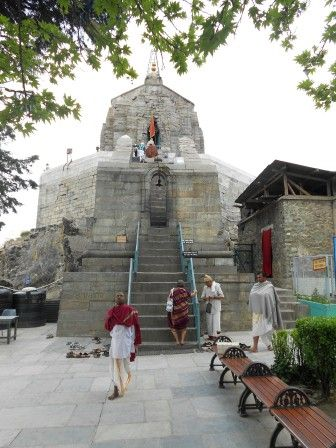Shankaracharya Temple | 23 Aug 2021
Why in News
Recently, as per the age-old tradition related to the annual Amarnath pilgrimage, the holy mace (Chhari Mubarak) of Lord Shiva was brought to the ancient Shankaracharya Temple.
Key Points
- About:

- It is also known as the Jyesteshwara temple or Pas-Pahar by Buddhists. Persians and Jews call it Bagh-i-sulaiman or the Garden of King Solomon. Persian inscriptions are also found inside the temple.
- It is on top of the Shankaracharya Hill (also called Hill of Solomon) on the Zabarwan Mountain in Srinagar, Kashmir.
- The temple is considered as the oldest temple of the valley of Kashmir.
- It is dedicated to Lord Shiva The temple is at a height of 1,000 feet above the plain and overlooks the city of Srinagar.
- The temple dates to 200 BC, although the present structure probably dates to the 9th century AD.
- It was visited by Adi Shankara and has ever since been associated with him; this is how the temple got the name Shankaracharya.
- Structure:
- This ancient temple is built in the indigenous early Kashmiri style of architecture and embraces the techniques prevailing in those days.
- The early Shihara style is prominently evident in the building design and is indicative of a horseshoe arch type of pattern.
- It is a massive stone structure built on a high octagonal plinth about thirty feet high.
- The plinth is surmounted by a low parapet wall. The shrine consists of a cell, circular inside, with a diameter of thirteen feet.
- The square building of the temple is supported by the basement.
Shankaracharya
- About:
- He was also known as Adi Shankara. Born in Kaladi, Kerala in 788 CE.
- Propounded the Doctrine of Advaita (Monism) and wrote many commentaries on the Vedic canon (Upanishads, Brahma Sutras and Bhagavad Gita) in Sanskrit.
- Major Work:
- Brahmasutrabhasya (Bhashya or commentary on the Brahma Sutra).
- Bhajagovinda Stotra.
- Nirvana Shatakam.
- Other Contributions:
- Was responsible for reviving Hinduism in India to a great extent when Buddhism was gaining popularity.
- Established four Mathas in the four corners of India and the tradition continues to this day.
